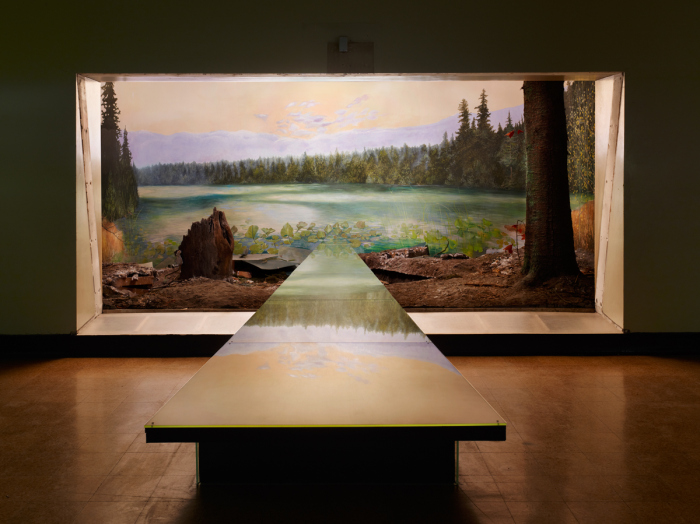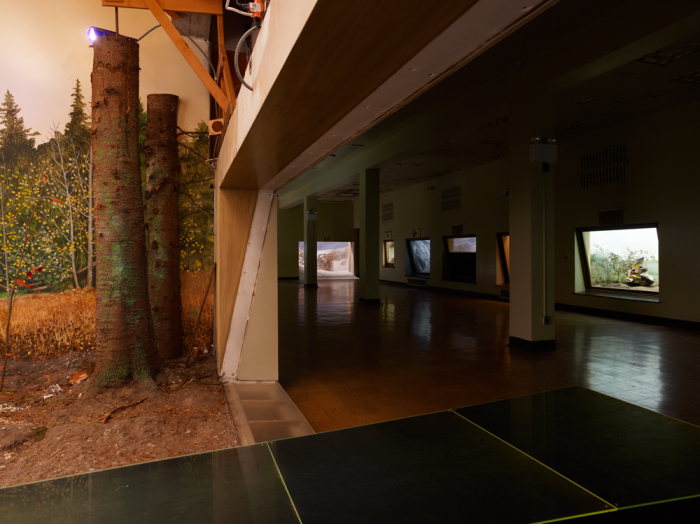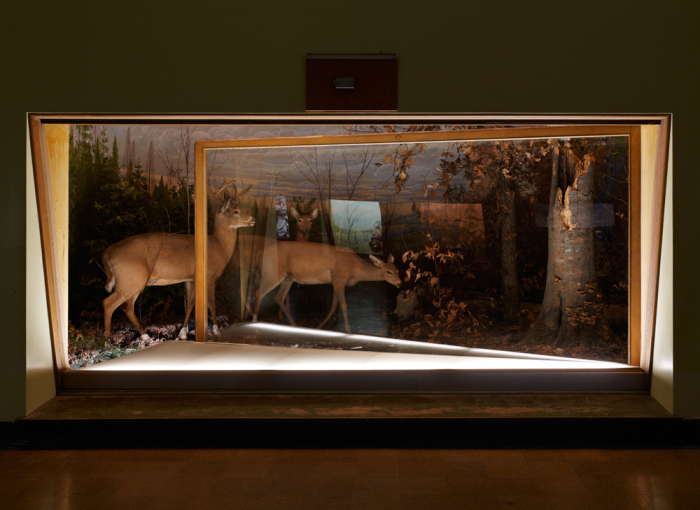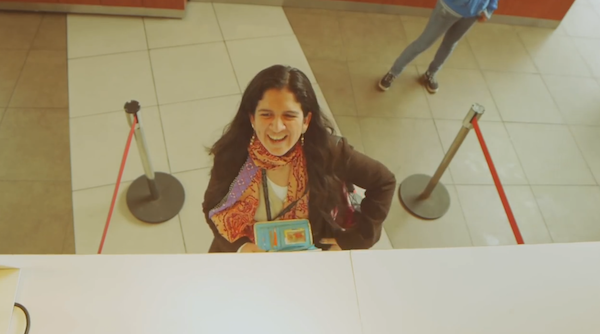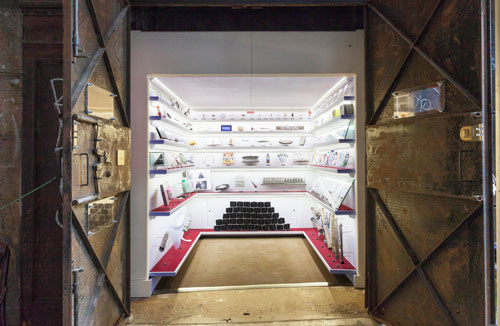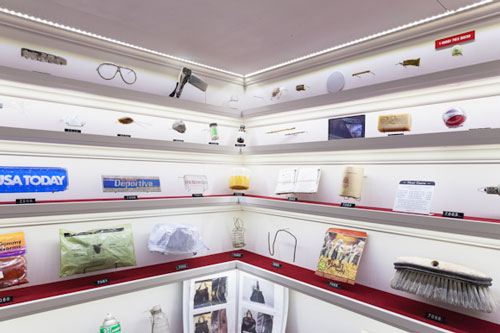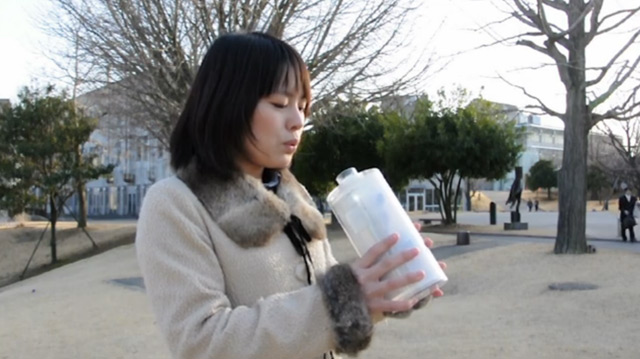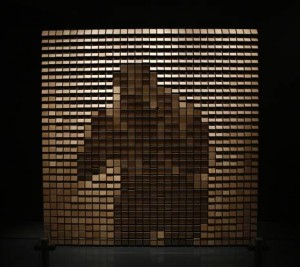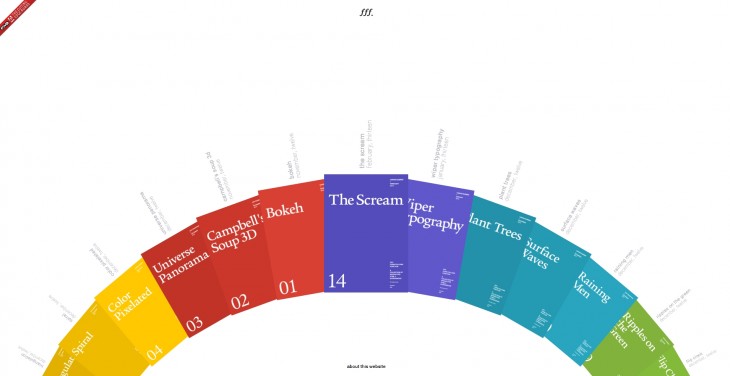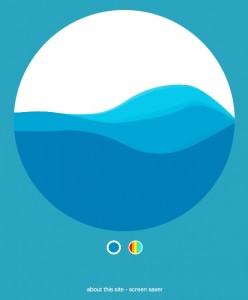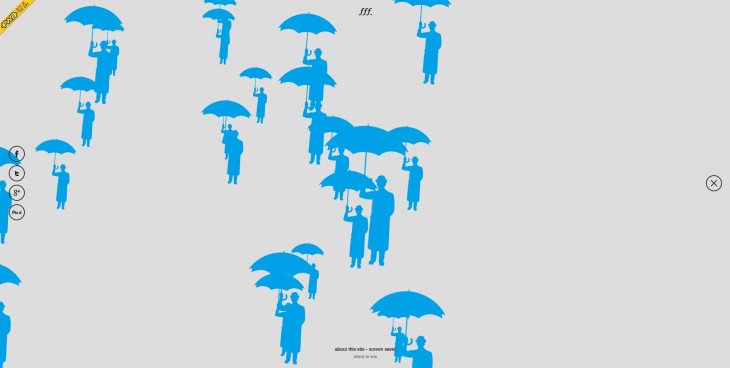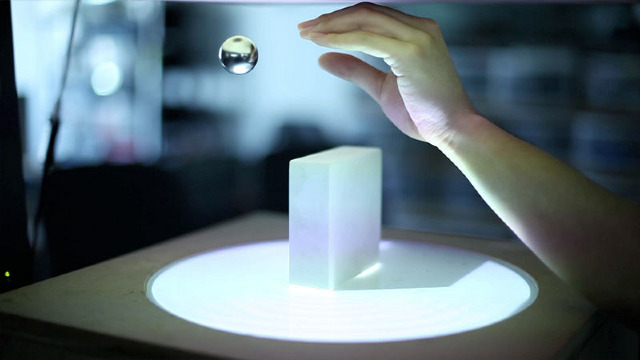So, we missed our inspiration last week due to the double –storm whammy, and lo and behold, it looks like we will get to experience that again this week at the studio. In fact, right now it looks like we are getting 2 inches of snow an hour.Therefore, we are offering four fun inspiration examples that, for us, illustrate the “wonderfulness of the unexpected” and its potential to take the ordinary and make it into the memorable.
1.
The first is an installation by Alois Kronschlaeger at the Mammal Hall of the former Grand Rapids Public Museum last year.
Here, Alois created several experiences that take the expected diorama and breaks down the barrier between visitor and exhibit. It’s as if he invites visitors into the other dimension – the one that lives just behind the glass and the museum’s walls.
2.
The second example is one that challenges the expected non-interactive nature of the street poster. This was the promotion for the new book, Marilyn: Intimate Exposures, that celebrates the photographs of Marilyn Monroe by Bernard of Hollywood (most famous being the “skirt” photo). Campaign by Preuss und Preuss
Certainly unexpected, this interactive needs no explanation on how to use and is almost impossible not to use. Interesting is how it places the visitor in the slightly uncomfortable position of deciding to interact or not. Our guess is that makes the interaction even more memorable.
3.
Example three is a visit to childhood for adults by a McDonalds in Peru, conceived of by Fahrenheit DDB.
This example of the unexpected in an ordinary setting builds on the power of scale that we have blogged about before.
4
Finally, what would it be like if the zombie phenomenon was real? Well, New Yorkers recently got an unexpected look at that. Here is the surprise from cable channel AMC.
All of these unexpected experiences are designed to move people out of the ordinary to the extraordinary. Thinking about how to do this in an exhibition is extremely important. It is easy for visitors who enter an exhibition to get into the “exhibition mode” and then behavior, learning and impact become somewhat muted.
Finding ways to create experiences of “unexpectedness” is one way an exhibition can create a greater impact.
Now, of course, one doesn’t want to create a heart attack, but unexpectedness can come from content as well as experience and design.
Share with us what kind of unexpected experiences you have encountered in a museum or other setting.
